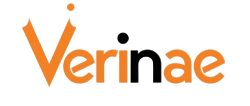So you’re looking at your business and thinking, how to google ads? It’s a whole thing, right? You see your competitors up there at the top of the search results and you want a piece of that action. It seems like some kind of dark magic but it’s really not. It’s just a system. A system you can learn.
This isn’t going to be some super slick guide filled with corporate talk. This is the down-to-earth version for 2025. We’ll walk through how to get started with Google Ads without needing a marketing degree. It’s about getting your message in front of people who are already looking for what you have. It is that simple, at its core.
The whole point of Google Ads is to pay for a good spot in the search results. People are searching for “emergency plumber near me” or “best running shoes for flat feet” and you can be the answer. It’s direct. It’s fast. And if you do it wrong, it can be a way to lose money very fast. So let’s not do that.
We’re going to break it down piece by piece. From setting things up to picking the right words and actually writing an ad that people might click on. This is your starting point for getting a handle on how to google ads in a way that actually works for your business.
Getting Your Google Ads Account Ready to Go
First thing’s first you need an account. This part is pretty straightforward. You’ll need a Google account and a website or landing page for your business. The setup process will ask you a bunch of questions. It’s designed to be a bit “helpful” which sometimes isn’t.
Google will try to push you into what they call a “Smart Campaign.” For now, you should try to find the option to switch to “Expert Mode.” It sounds scary but it gives you way more control over everything, which is what we want. Don’t worry, you don’t have to be an expert to use it.
You’ll need to put in your payment information of course. Google needs to know how they’re going to get paid. Make sure all your business information is correct. This seems like a small thing but it helps build a little bit of trust with the system. And with potential customers.
The goal here is just to get the foundation built. The account itself is just the container. All the real work happens inside of it, when we start to build the campaigns. It is the campaign structure that will determine a lot of your success.
The Big Deal About Keywords: Finding What People Search For
Keywords, these are the words people type into Google that you want your ad to show up for, are basically the foundation. If you get this part wrong, everything else is a waste of time and money. You could have the best ad in the world but if it shows up for the wrong search, who cares? Nobody.
You need to put yourself in your customer’s shoes. What words would they use to find you if they didn’t know your business name? It’s not always what you think. You might call your product a “hydration solution” but your customers are probably just searching for “water bottle.” Be simple. Be direct.
Brainstorming Your First Keyword List
Just open a document and start typing. Think of all the different ways someone could describe what you sell. Think about problems you solve. Think about brand names if you sell specific products.
Start with obvious stuff: “men’s leather wallet”
Think about problems: “how to fix a leaky faucet”
Think about locations: “pizza delivery in brooklyn”
Get super specific too: “size 11 waterproof hiking boots”
Don’t judge your ideas yet. Just get them all down. This is the raw material. We’ll sort through it later. The goal is to have a big list to work with. A big messy list is normally a good starting point.
Using Google’s Own Tools
Inside your Google Ads account, there’s a tool called the Keyword Planner. It’s pretty useful. You can put in a few of your brainstormed ideas and it will spit out a ton of related keywords. This is a good way to find things you didn’t think of.
It will also give you an idea of how many people search for these words each month. And it gives you a rough idea of how much it might cost per click. Pay attention to this. Some keywords are way more expensive than others. You want to find a balance. A sweet spot.
Understanding Match Types
This part is a bit weird but important. You have to tell Google how closely you want a person’s search to match your keyword. There are three main types.
Broad Match: This is the default and it’s very loose. If your keyword is `women’s hats`, your ad might show up for “buy ladies scarves.” Google is just guessing. It’s normally not a great idea to start with this.
Phrase Match: This is better. You put your keyword in quotes, like `”women’s hats”`. Your ad will show up for searches that include that phrase. So it could show up for “buy women’s hats online” or “blue women’s hats.” This offers more control.
Exact Match: This is the most specific. You put the keyword in brackets, like `[women’s hats]`. Your ad will only show up for that exact search or very, very close variations. This is good when you know a keyword converts really well.
Actually Building Your First Campaign
Okay, you’ve got an account and a list of keywords. Now it’s time to build the thing. Inside your account, you’ll create a “New Campaign.” Google will ask you for a goal. Things like “Sales” or “Leads” or “Website traffic.” Pick the one that makes the most sense for you.
You’ll have to set a daily budget. This is the maximum amount you’re willing to spend per day, generally. Start small. You can always increase it later. Don’t go all-in on day one. It’s a common mistake that people make.
Then you’ll choose your location targeting. Where do your customers live? You can target by country, state, city, or even a specific zip code. Be realistic. If you only serve a specific area there’s no point in showing your ads to the whole world.
Now you have to write the ad itself. This is where a lot of people get stuck for a while. You get a few headlines and a couple of description lines. Your goal is to match what the person searched for and give them a reason to click your ad instead of someone else’s.
Don’t Just Set It and Forget It: Checking Your Ads
Your campaign is live. Awesome. Don’t go on vacation yet. Running Google Ads is like tending a garden, not setting off a firework. You have to check on it. See what’s working and what isn’t.
Log in every few days at the beginning. Look at the numbers. The main ones to watch are Clicks, Impressions (how many times your ad was shown), and Click-Through Rate (CTR). The CTR is the percentage of people who see your ad and actually click it.
If your CTR is really low, it might mean your ad isn’t very good or your keywords don’t match your ad copy. If you’re getting lots of clicks but no sales, there might be a problem with your website. These numbers are clues. They tell you where to look.
The game is to pause the stuff that isn’t working (like keywords that cost a lot but never lead to a sale). And you want to put more budget into the things that are working. It’s a process of constant small adjustments. It is this process that separates good campaigns from bad ones.
FAQs: How to Google Ads
How to google ads for beginners?
Start with one single campaign focused on your most important product or service. Use a small list of highly relevant keywords with Phrase and Exact match types. Set a low daily budget and check your results every few days to learn.
How much does it cost to run Google Ads?
It varies wildly. You control the cost with your daily budget, which can be as low as $5 or $10. The cost-per-click (CPC) can be less than a dollar or over $50 depending on your industry and the keywords you choose.
How long does it take for Google Ads to start working?
You can start seeing traffic from your ads within an hour of your campaign being approved. But it typically takes a few weeks or even a couple of months of testing and making changes to get consistent, profitable results.
Can I run Google Ads myself?
Yes, you absolutely can. It takes some time to learn the platform and monitor your campaigns. For a small business, learning the basics yourself is a great way to understand your marketing and your customers better.
Key Takeaways
Always switch to “Expert Mode” when setting up your account for more control.
Your keyword research is the most important part of the whole process.
Start with Phrase Match and Exact Match keywords to avoid wasting money.
Set a small daily budget to start. You can always raise it later.
Writing a good ad means matching the user’s search query.
Check your campaign data regularly. Don’t just set it and forget it.
Pause what isn’t working and do more of what is. It’s a simple idea.






